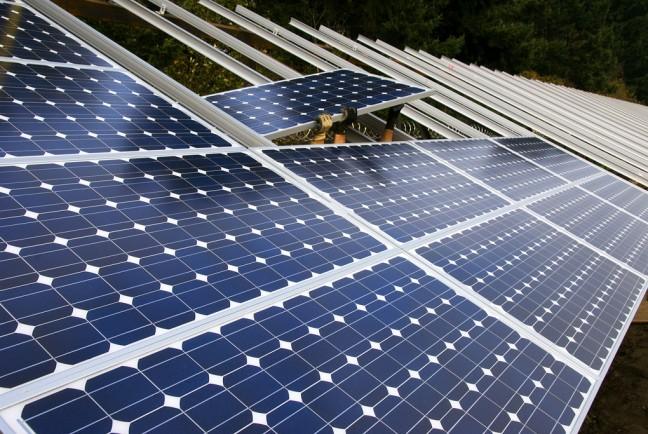In the wake of increased solar-powered infrastructure at the University of Wisconsin, leaders in sustainability on campus weighed in on UW efforts to combat the effects of climate change, as well as how the projects are started, funded and inhibited.
In the last decade, UW has started implementing solar energy systems in several campus facilities, including Dejope and Leopold Residence Halls, and most recently Gordon Dining & Event Center. These changes for more sustainable energy systems have been implemented by collaborations between many different parts of the University systems, including University Housing, professors, researchers and UW students.
La Follette School of Public Affairs Professor Gregory Nemet delved into the topic in his new book, How Solar Energy Became Cheap, explaining to readers the international systems that have led to the reduced cost of solar energy systems in recent years.
Nemet said cheap solar power was a long-won product of approximately 60 years of research, international exchange and consumer-market focused entrepreneurship.
The U.S. was initially leading in investment and research into solar power until Japan took the lead once the Reagan administration cut research budgets in the 1980s, Nemet said. The Green Party in Germany then developed a solar subsidy program, which enabled further production efforts there while Chinese entrepreneurs simultaneously began to create solar products as well. As of 2016, China is the largest producer of solar panels, according to the World Energy Council.
“Solar is really cheap now compared to where it used to be,” Nemet said. “And it’s also cheap compared to competing technologies like natural gas or coal . . . It’s come a really long way.”
Many of the recent changes toward a more sustainable campus have been the product of student-led sustainability efforts. Helios, a registered student organization on campus, was funded by Green Fund grants, a program that, according to the Office of Sustainability website, “supports student-initiated projects that reduce the environmental footprint and operating costs of on-campus facilities.”
This funding helped make the solar energy project at Gordon Dining & Event Center more financially feasible and ultimately successful.
Sustainability Coordinator for University Housing Breana Nehls emphasized the importance of making sustainability efforts both tangible and visible in order to effectively demonstrate impact.
“We like to promote renewable energy across campus,” Nehls said. “Having these three different systems in place [at Leopold, Dejope and Gordon] helps make solar energy more visible to students and staff.”
Both Nemet and Nehls pointed to data collection and digital platforms which more concretely reflect the benefits of solar energy compared to other energy alternatives. According to the Office of Sustainability website, one of the innovations made to the Gordon Dining & Event Center was an online dashboard that provides comparative metrics on solar energy.
Seeing these comparisons in real time helps demonstrate what Nehls calls “tangible changes” that students and staff can see for themselves and can help inform people about why sustainable energy is important.
Though there have been efforts toward a more sustainable campus, Nemet argued that there is not enough momentum from the university system as a whole towards becoming a model and leader in sustainability efforts.
“On the campus, I’m actually shocked by how little [solar energy] there is,” Nemet said. “If you look at other college campuses across the country, not just in sunny places, they’re going way forward on this.”
UW, home to the oldest solar laboratory in the country, currently has only three buildings with solar powered energy, and the university did not make it on Princeton Review’s 2018 list of 399 greenest colleges.
“[Solar energy] is economically advantageous and another part of this is that a university is trying to be a model for the rest of society,” Nemet said.
Both Nehls, who represents the faculty side of the university’s sustainability efforts, and Nemet, who represents the academic perspective, shared reasons that hindered the implementation of a solar energy system at UW.
Nehls said certain organizational factors may be inhibiting the growth of solar energy on campus.
“These decisions involve many different parties,” Nehls said. “Getting everyone involved and supportive of our goals is one of the largest hurdles that we experience.”
Nemet suspects that high upfront costs to solar power may be partly to blame for this lag, though he does not see a reason UW should be hindered from accessing capital for systems that would save the university more money in the long run.
Recent research Nemet conducted with a student-produced no evidence that any state legislation or university administrative regulation would prohibit the implementation of more solar energy at UW.
Though both were supportive of the changes happening to some UW infrastructure, Nemet pointed out that the process of making innovative, sustainable energy technologies cheaper and more accessible would need to be expedited in order to be effective in battling climate change.
“[Solar Energy’s reduced cost] took too long if we wanted to apply that to other technologies that we might need,” Nemet said. “Another 60 years is too late for climate change.”


